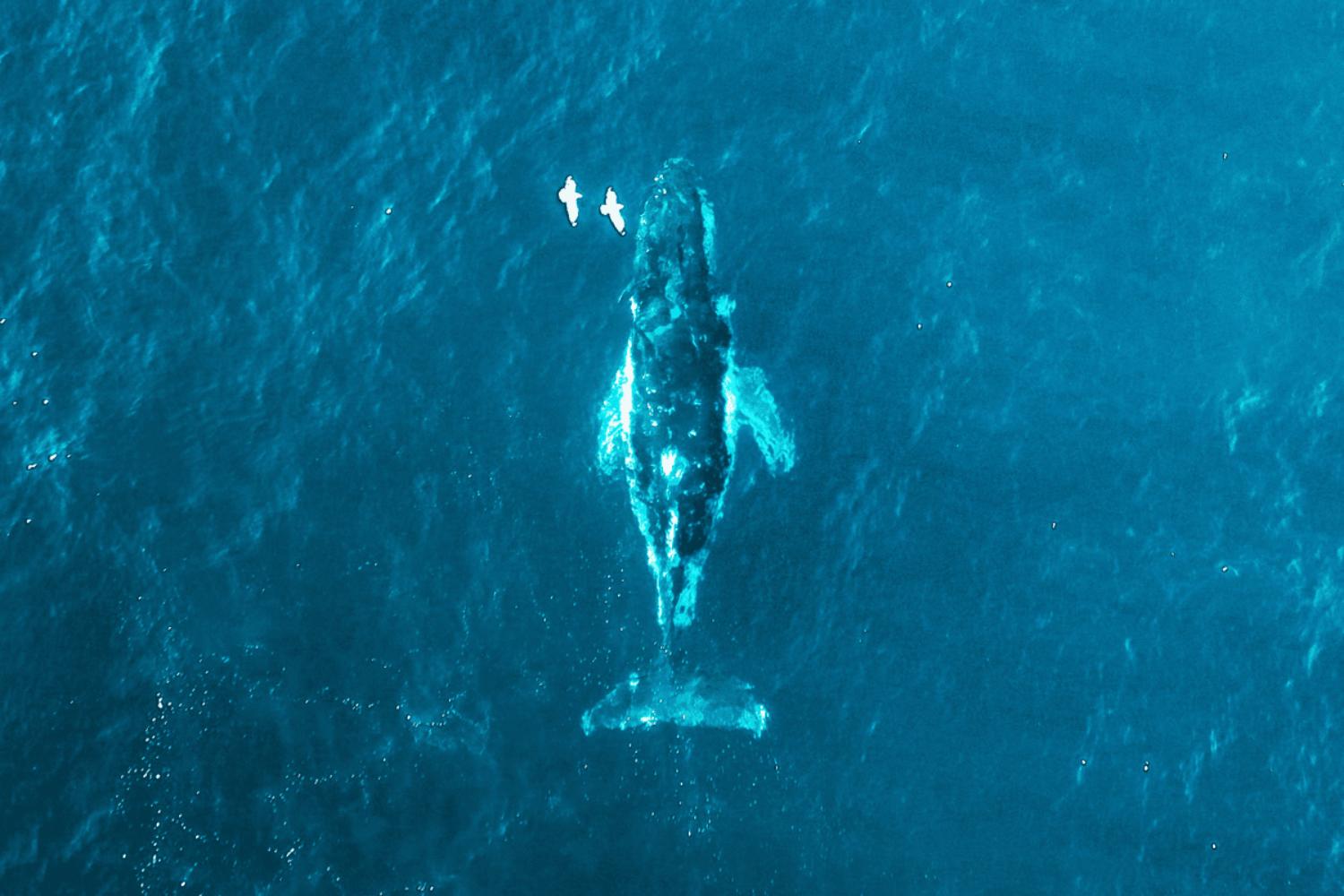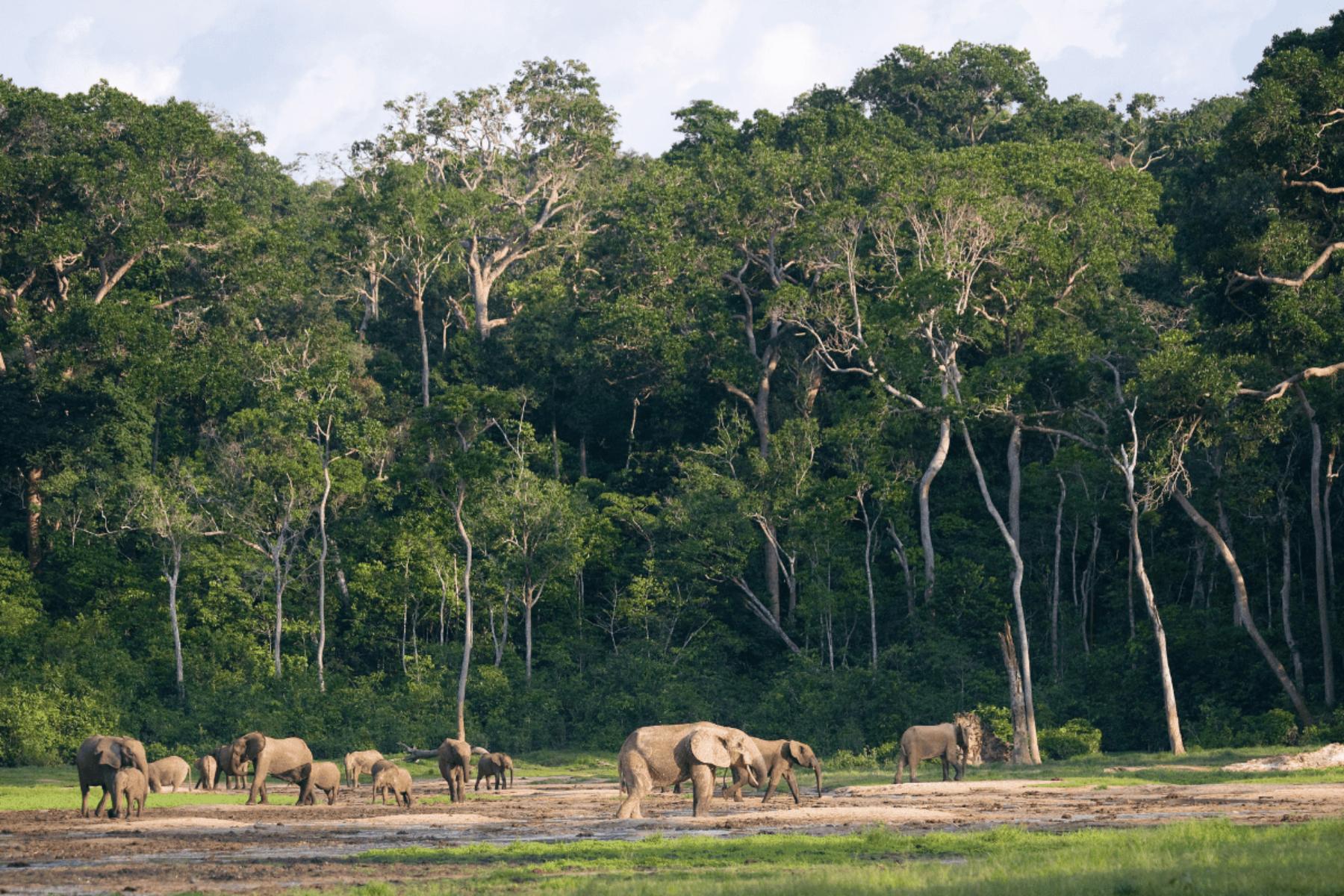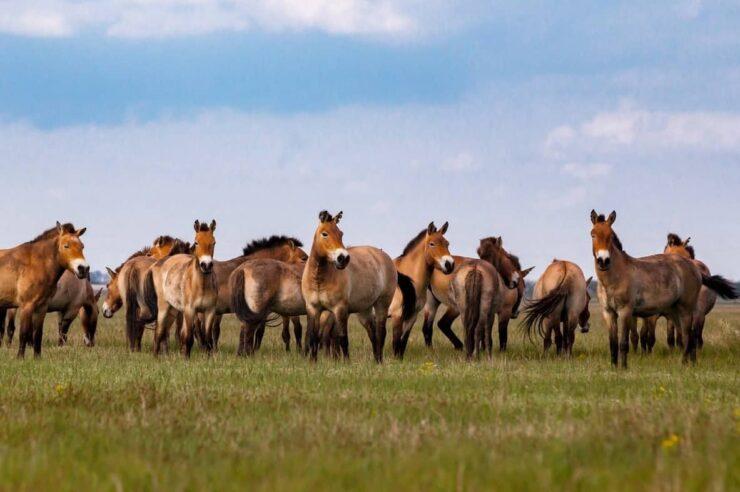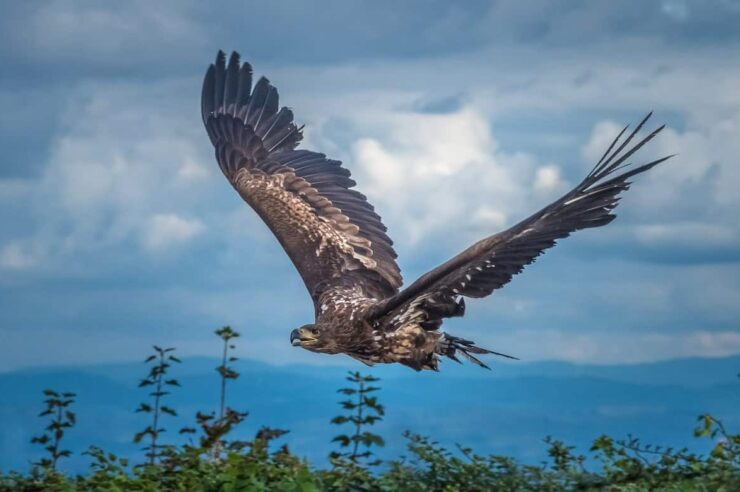Is tackling biodiversity loss or climate change more important? The beautiful thing that many people don’t realise is that doing the first will fix the second, writes Martin Wright
Can a grey wolf calm the climate? Can a whale tame the skies?
No, those aren’t the chorus lines of some whimsical 70s folk song. Rather, they’re the sort of legitimate questions arising from a fascinating new study into a previously overlooked, but potentially crucial, benefit of rewilding.
It found that maintaining healthy populations of just nine key wild species (or groups of species) – including elephants and wolves, but also wildebeest, musk ox and bison, as well as marine fish, whales, sharks and sea otters – can play a vital role in controlling the carbon cycle on land and sea. How? Because in order for such creatures to thrive, they need a viable habitat. And if that’s conserved, whether in the oceans, forests, grasslands or swamps, so are the many ways in which its natural properties of sequestering and storing carbon are maintained, too.
The overall impact could be, to put it mildly, massive. Compiled by 15 scientists from eight different countries, the study concluded that it could collectively enable the capture of 6.41bn tonnes of carbon dioxide every year. This is equivalent to a cool 95 per cent of the total needed to meet the Paris agreement target of removing enough carbon from the atmosphere to keep global temperature rises below the 1.5C threshold.
The mechanisms by which this can happen are many and varied. Whales, for example, directly store carbon in their bodies, while the (substantial) quantity of whale poo is thought to stimulate the growth of phytoplankton. These in turn sequester shedloads of CO2 – as much as 1.7tn trees, or four Amazon rainforests’ worth.
Other creatures have a less dramatic, but no less beneficial impact. Take wolves. When they were reintroduced into Yellowstone Park in the US in the mid-90s, they triggered an extraordinary array of changes, from the recovery of local woodlands to the revival of populations of beavers, swans and wild flowers, so regenerating a climate-friendly ecosystem.

Did you know that whales directly store carbon in their bodies? Image: Dmitry Osipenko
The study’s leader, Yale School of the Environment’s Professor Oswald Schultz, commented that, “wildlife species, throughout their interaction with the environment, are the missing link between biodiversity and climate. This interaction means rewilding can be among the best naturebased climate solutions available to humankind.”
This news couldn’t come at a better time for advocates of a wilder world. Because rewilding’s had a mixed press of late. While many applaud the progress made in places like the Knepp Estate in Sussex, or Wild Ken Hill in Norfolk, others are sceptical. Much, but not all, of that scepticism is unfounded.
Fears that rewilding would harm food security are largely groundless: most nature recovery projects are happening on relatively unproductive land, and the benefits they bring, such as reducing floods, boosting populations of natural pest controllers and conserving soil, can actually have positive impacts on food production in fields nearby.
At various times, though, sweeping efforts to rewild land or sea, in places as diverse as Wales, Scotland, the Netherlands and Tanzania, without bringing local people on board, have drawn some understandable criticism. Which is why the best nature recovery projects make sure to put humans at the heart of it all.
If you want to calm the climate, look to where the wild things are
So, in Scotland, Highlands Rewilding has plans to revitalise communities with a mix of new, sustainable businesses such as agroforestry, horticulture and ecotourism, bringing people back to the Highlands. As its head of operations, Kirsty Mackay, puts it: “Some people have the idea that rewilding is a modern form of Highland clearances. [But] for us, rewilding is all about repeopling the land.”
In India, campaigners are working with local people to secure a ‘right of passage’ for elephants through densely populated rural areas, helping avoid conflict with villages. In east Africa, an all-woman ranger unit known as Team Lioness, composed of Maasai women, is combating elephant poaching and helping to secure a future that has space for people and elephants together. Squaring that circle is not always easy: the recent rapid revival of wolves across Europe has led to conflicts with sheep farmers in particular. But here, too, smart partnerships, such as providing farmers with livestock guard dogs, are underway to help to resolve it.
So, can wolves and whales calm the climate? Not alone. But as part of an overall strategy, combining conservation with climate action, they can play a vital part. And for anyone who cares about the future of some of the world’s most threatened and magnificent creatures, our urgent need to stem carbon catastrophe might spark some renewed hope, too. Because if you want to calm the climate, look to where the wild things are.
Martin Wright is a director of Positive News.
Main image: Andrey Gudkov/Getty
You’re the solution that Positive News needs
Our small, dedicated team is passionate about building a better alternative to the negative news media. And there’s never been a greater urgency to our mission.
But to invest in producing all the solutions journalism that the world is longing for, we need funding. And because we work in your interests – not those of a wealthy media mogul or corporate owner – we’re asking readers like you to get behind our team, by making a regular contribution as a Positive News supporter.
Give once from just £1, or join 1,200+ others who contribute an average of £3 or more per month.
Join our community today, and together, we’ll change the news for good.





